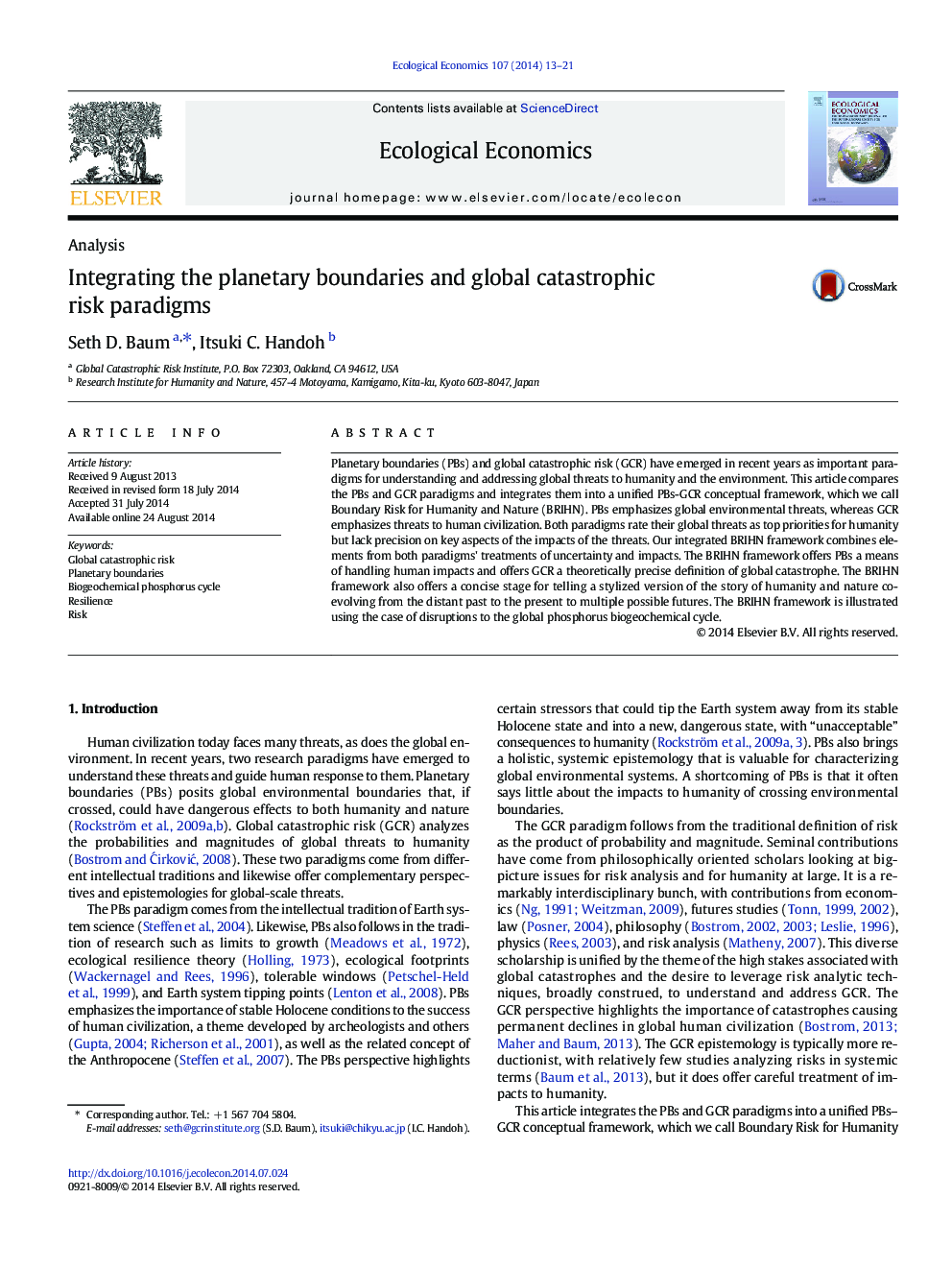| کد مقاله | کد نشریه | سال انتشار | مقاله انگلیسی | نسخه تمام متن |
|---|---|---|---|---|
| 5049501 | 1476372 | 2014 | 9 صفحه PDF | دانلود رایگان |
- We integrate the planetary boundaries and global catastrophic risk paradigms.
- The two paradigms focus on global-scale environmental and human system threats.
- We develop a new framework Boundary Risk for Humanity and Nature (BRIHN).
- The BRIHN framework combines features of PBs and GCR, plus new features.
- We illustrate BRIHN through analysis of the global phosphorus biogeochemical cycle.
Planetary boundaries (PBs) and global catastrophic risk (GCR) have emerged in recent years as important paradigms for understanding and addressing global threats to humanity and the environment. This article compares the PBs and GCR paradigms and integrates them into a unified PBs-GCR conceptual framework, which we call Boundary Risk for Humanity and Nature (BRIHN). PBs emphasizes global environmental threats, whereas GCR emphasizes threats to human civilization. Both paradigms rate their global threats as top priorities for humanity but lack precision on key aspects of the impacts of the threats. Our integrated BRIHN framework combines elements from both paradigms' treatments of uncertainty and impacts. The BRIHN framework offers PBs a means of handling human impacts and offers GCR a theoretically precise definition of global catastrophe. The BRIHN framework also offers a concise stage for telling a stylized version of the story of humanity and nature co-evolving from the distant past to the present to multiple possible futures. The BRIHN framework is illustrated using the case of disruptions to the global phosphorus biogeochemical cycle.
Journal: Ecological Economics - Volume 107, November 2014, Pages 13-21
